“I am a king’s daughter,
And I grow old within
The prison of my person,
The shackles of my skin.”
— Peter S. Beagle, “The Last Unicorn”
I have never been especially religious in the traditional convention of the word. As a child, my devotion was to the fantastical, which I regarded with a somewhat devout fervor. I did not believe in Santa Claus, though this can also be attributed to the fact that I am Jewish. I did, however, believe in the tooth fairy. I would write her letters whenever I lost a tooth, which my mom graciously replied to on paper she embellished with her graphic design skills. I collected compendia detailing the lives and mythos of fairies and unicorns, carrying them with me as if they were my Bibles. As I grew older, my belief died.
As humans, we are constantly reminded that time is catching up to us. A persisting cognizance of our mortality can also be especially common in those born female. Speaking as a woman and a girl, I have taken notice of the widespread notion of the “biological clock” as something we must outrun. We are made to be at odds with our bodies as they age, and astutely aware that we are rapidly growing less valuable as our youth, our innocence, and in some cases our ability to bear children begin to ebb away. The prevalence of this resistance towards aging is what makes the image of the unicorn, unrelentingly beautiful and immortal, so poignant.
Early depictions of the unicorn that closely resemble our modern interpretation can be seen in the Middle Ages. Undoubtedly, one of the most famous portrayals of unicorns is the seven-piece exhibit, “The Unicorn Tapestries,” now residing in the Met Cloisters. These tapestries present the people’s hunt for the unicorn, a powerful, enigmatic, and biblical being that all sought to possess. The tapestries work to tell a story with all of them boasting Met assigned descriptive titles: “The Hunters Enter the Woods”; “The Unicorn Purifies Water”; “The Unicorn Crosses the Stream”; “The Unicorn Defends Himself”; “The Unicorn Surrenders to a Maiden”; “The Hunters Return to the Castle” and finally, “The Unicorn Rests in the Garden.” Derived from the story of the “Physiologus” and the bestiaries, the prevailing myth of the Middle Ages is that the unicorn can only be tamed by a virgin maiden. According to the first volume of “The Sacristy,” published in 1871 by John Hodges, if the woman in pursuit of the unicorn is found not to meet the stipulation of chastity, she is deemed “corrupt” and “defiled” and the unicorn will kill her. The unicorn is, as such, a surveyor of purity among women and girls, an entity which would now be considered an enforcer of the patriarchy.
Modern unicorn media has captured the hearts of children and adults alike, in part because it has since evolved from its darker conception. My favorite rendition of the creature without question is in “The Last Unicorn” by Peter S. Beagle. Beagle draws on various artistic and conceptual elements of the tapestries while upending the puritanical undertones to create a story that can be read as feminist. A clear discrepancy to note between the tapestries and both the book and movie adaptations of “The Last Unicorn” is that the unicorn, dubbed in human form as Lady Amalthea, is distinctly female. In this world of magic, the antiquated idea that youth and purity are what lure the unicorn is still commonplace. A hunter passing through the forest of the solitary unicorn protagonist cautions her, “Pay no mind to young girls, for they never become anything more than silly old women.” Upon reading this quote right at the beginning of the book, I was struck by Beagle’s head-on acknowledgment of both the original mythos and the specific flavor of ageism that is often directed toward women. Perusing the reviews on Goodreads (a site regrettably rich with decades of critique despite its current status as an Amazon subsidiary), some seem to interpret these gibes as speaking for Beagle’s views. I would argue, having gained familiarity with the original stories of the unicorn, that there is far less room to accuse the author of agreeing with the prejudices voiced by characters in the book. Moreover, I am willing to claim that this fairy tale aims to dismantle these prejudices rather than to perpetuate or normalize them.
Beagle subverts the unicorn myth by having the unicorn deliberately avoid the young girls who seek to prove their innocence before marriage, as seen in the scene introducing Prince Lir, Amalthea’s ephemeral love interest. What the unicorn seeks instead is those of pure heart looking for their purpose, a bill fit by Molly Grue, a mature, somewhat older woman who spends her time in a gang of traveling outlaws along with her partner, Captain Cully. Molly does not fit into the mold of a perfect maiden, which makes her first encounter with the unicorn such a memorable scene for so many young girls acquainted with the book or movie adaptation. I cannot bear to cut parts of this scene, as each line has a purpose in illustrating my prior points:
“Where have you been?” she cried. “Damn you, where have you been?” She took a few steps toward Schmendrick, but she was looking beyond him, at the unicorn.
When she tried to get by, the magician stood in her way. “You don’t talk like that,” he told her, still uncertain that Molly had recognized the unicorn. “Don’t you know how to behave, woman? You don’t curtsy, either.”
But Molly pushed him aside and went up to the unicorn, scolding her as though she were a strayed milk cow. “Where have you been?” Before the whiteness and the shining horn, Molly shrank to a shrilling beetle, but this time it was the unicorn’s old dark eyes that looked down.
“I am here now,” she said at last.
Molly laughed with her lips flat. “And what good is it to me that you’re here now? Where were you twenty years ago, ten years ago? How dare you, how dare you come to me now, when I am this?” With a flap of her hand she summed herself up: barren face, desert eyes, and yellowing heart. “I wish you had never come. Why did you come now?” The tears began to slide down the sides of her nose.
The unicorn made no reply, and Schmendrick said, “She is the last. She is the last unicorn in the world.”
“She would be.” Molly sniffed. “It would be the last unicorn in the world to come to Molly Grue.” She reached up then to lay her hand on the unicorn’s cheek; but both of them flinched a little, and the touch came to rest on the swift, shivering place under the jaw. Molly said, “It’s all right. I forgive you.”
The unicorn is symbolic of Molly’s lost youth, and in accepting Molly as a companion, the unicorn dispels the notion that beauty or so-called “purity” can be lost to time. Despite this, the unicorn is not immune to feeling that her “girlhood” is lost. When Schmendrick changes the unicorn into Lady Amalthea, she cannot help but mourn both her mortality and her distinct identity as a woman.
Amalthea laments, “I am myself still. This body is dying. I can feel it rotting all around me. How can any thing that is going to die be real? How can it be truly beautiful?”
I am sure most people know of the concept that beauty is fleeting. Yet there is beauty all around us, we are embraced by it. Beagle’s prose taps into this idea very well, synthesizing a symbol of many young girls’ childhoods with the struggles of women. I do not think that we grow less beautiful as we age. I think we are simply resistant to change. I would argue that we simply start to see less of the beauty around us once our “childlike wonder” begins to dissipate, but I do not believe that child inside us is gone.

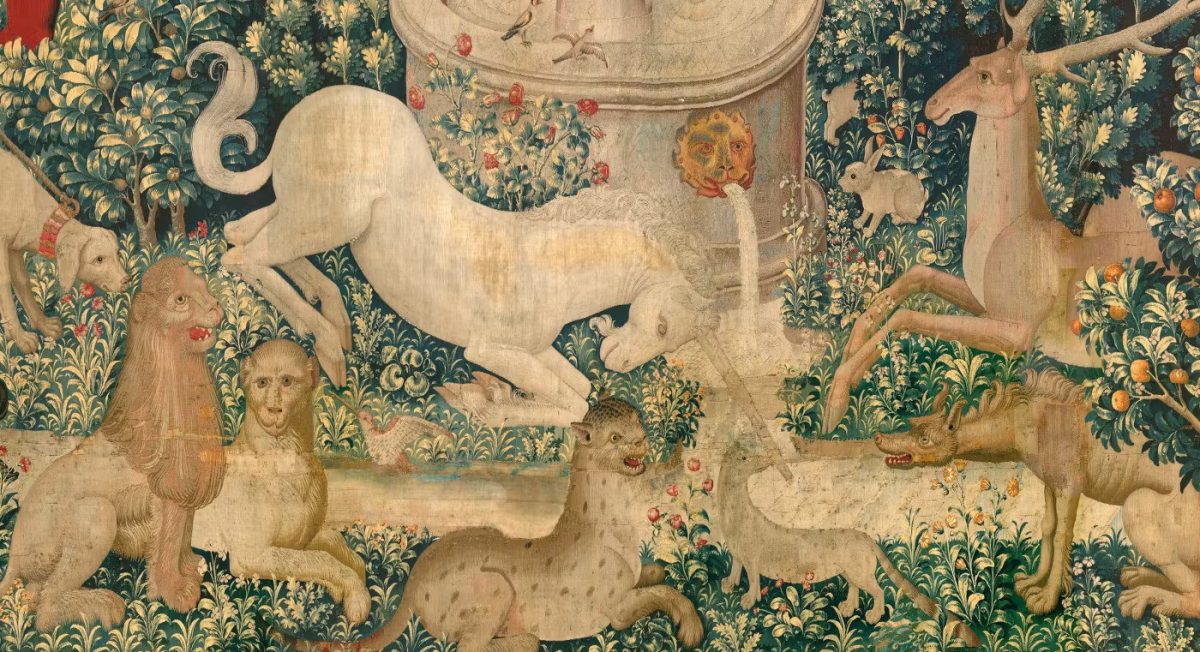
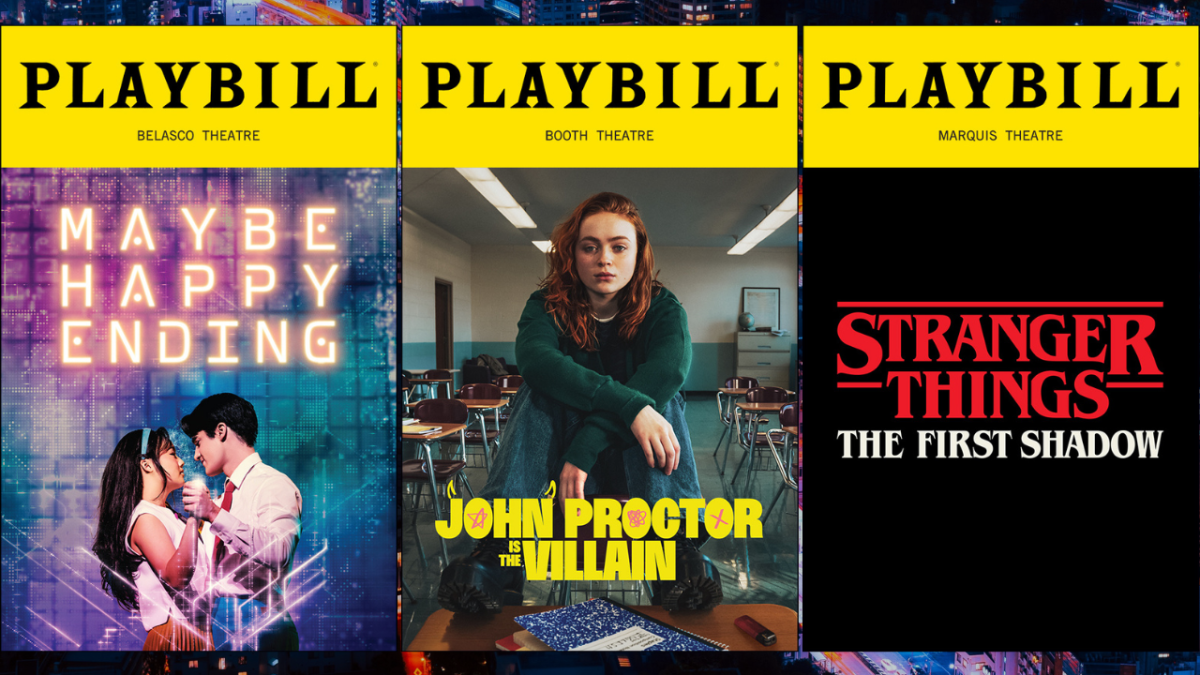
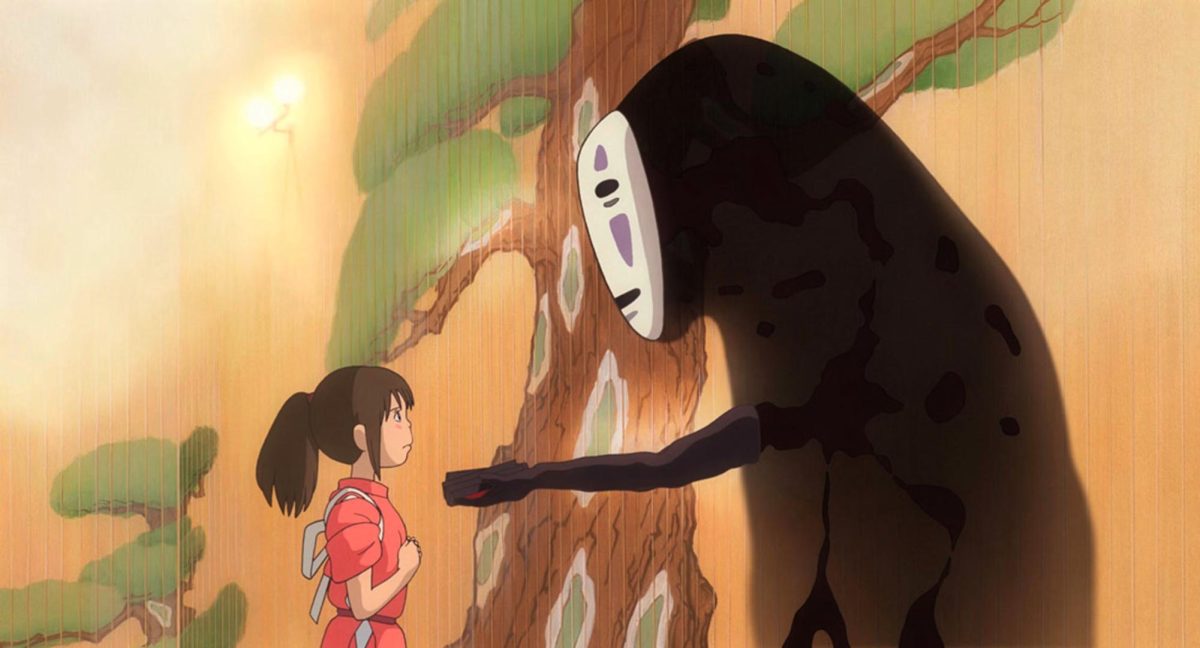
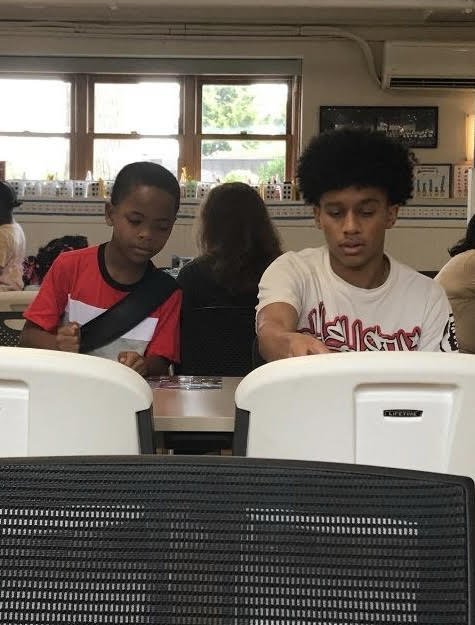
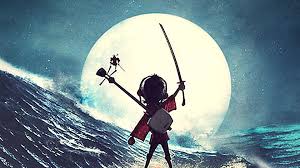

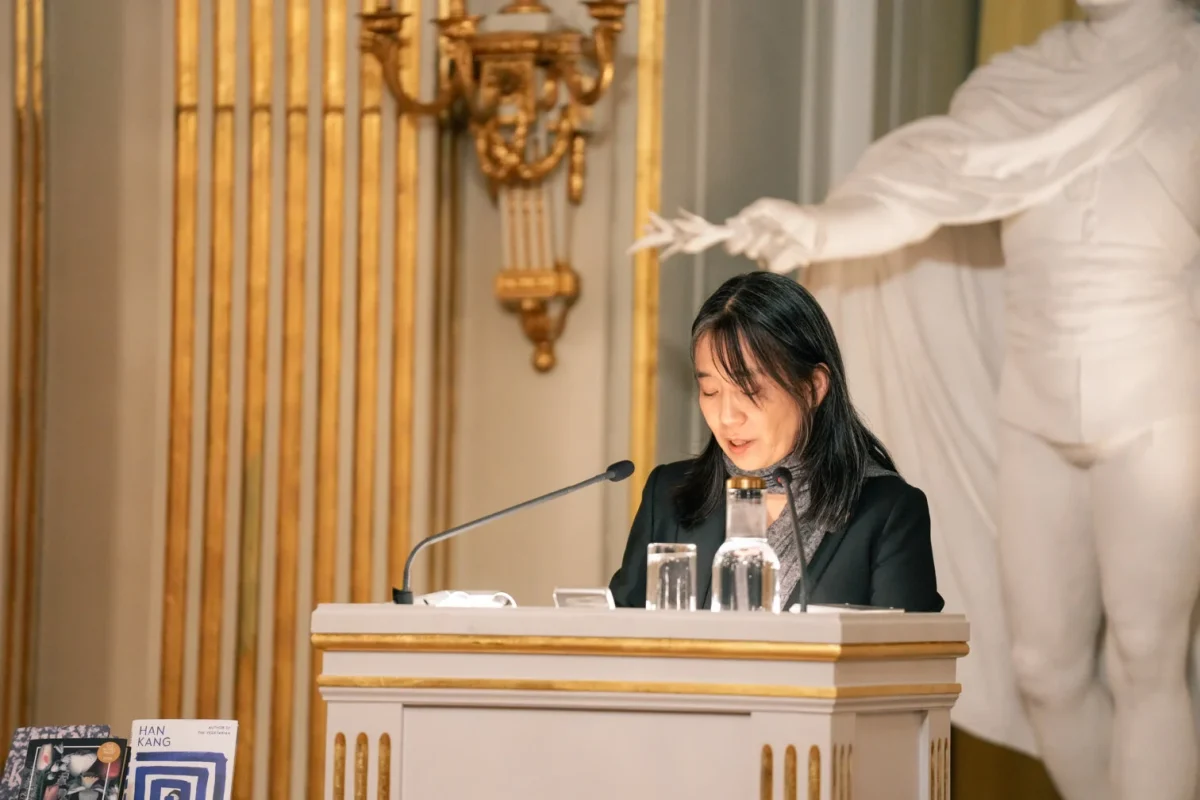
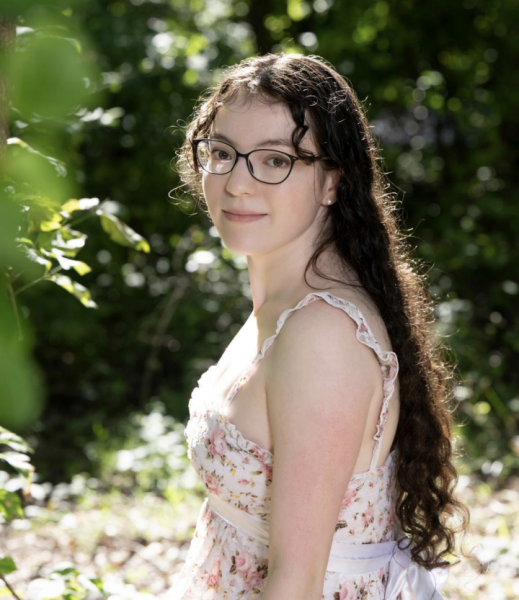
Kai Grenham • Jun 2, 2025 at 8:05 pm
Beautiful article!! I am a big fan of Peter S. Beagle, but I wasn’t aware of the historical context of the unicorn.
Allison • May 29, 2025 at 8:48 am
This article would not be out of place in a professional literary magazine like The New Yorker.
Jennifer Kaufmann • May 28, 2025 at 9:08 pm
As someone who grew up right next to the Cloisters and visited this tapestry over winter break, I was excited to stumble upon this article! I admit that I have not read The Last Unicorn, but your description made me curious, and I have added it to my summer reading list.
Thanks for the inspiration!
Jen (5th grade teacher)
Eduardo Polón • May 28, 2025 at 3:11 pm
Allison, this piece is not only beautifully written but also deeply resonant. The way you weave personal reflection, literary analysis, and cultural critique speaks to both your intellectual maturity and your distinctive voice as a writer. It’s been a joy to see you grow in your thinking and expression, both in the classroom and now as a Staff Editor of Wildezine. This grateful teacher, husband, and father of a daughter thanks you for inviting readers into such a thoughtful exploration of identity, aging, and enduring beauty. ¡Sigue brillando!
Barbara von Salis • May 28, 2025 at 2:09 pm
I love the Cloisters, so I loved this shoutout to medieval art. I have not read this book, but maybe I will have to pick it up when I get the chance!